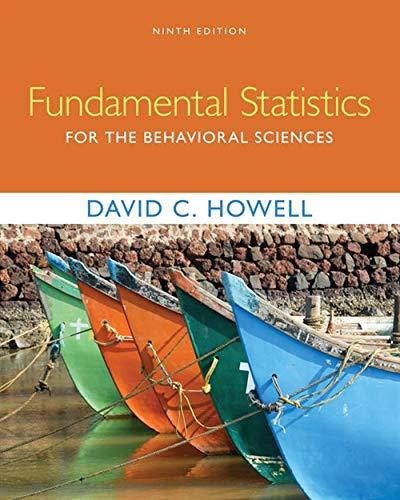Calculate d for the main effect of Group in the data in Exercise 17.17. Exercise 17.17 If
Question:
Calculate d for the main effect of Group in the data in Exercise 17.17.
Exercise 17.17
If you go back to Exercise 16.2, you will see that it really forms a 2 × 2 factorial. Run the
factorial analysis and interpret the results. (The data are reproduced here.)
Exercise 16.2
Another way to look at the Eysenck study mentioned in Exercise 16.1 is to compare four
groups of participants. One group consisted of Younger participants who were presented the
words to be recalled in a condition that elicited a Low level of processing. A second group
consisted of Younger participants who were given a task requiring the Highest level of processing
(as in Exercise 16.1). The two other groups were Older participants who were given tasks
requiring either Low or High levels of processing. The data follow:
Exercise 16.1
An important study in the memory literature is an old study by Eysenck (1974) in which he
compared the recall of older participants under one of five levels of processing of the material.
He demonstrated that when asked to perform a higher level of processing of a list of words,
participants showed better recall at a later time. Another aspect of Eysenck’s study compared
Younger and Older participants on their ability to recall material in the face of instructions
simply telling that they should memorize the material for later recall. (Presumably this task
required a high level of processing, which older participants might not do well.) The data on
10 participants in each group follow, where the dependent variable is the number of items
recalled.
Step by Step Answer:

Fundamental Statistics For The Behavioral Sciences
ISBN: 9781305652972
9th Edition
Authors: David C. Howell





